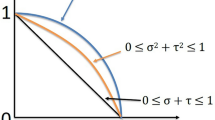Abstract
In quality function deployment (QFD), establishing the relationship matrix is quite an important step to transform ambiguous and qualitative customer requirements into concrete and quantitative technical characteristics. Owing to the inherent imprecision and fuzziness of the matrix, the fuzzy linear regression (FLR) is gradually applied into QFD to establish it. However, with regard to an FLR model, the h value is a critical parameter whose setting is always an aporia and it is commonly determined by decision makers. To a certain extent, this subjective assignment fades the effectiveness of FLR in the application of QFD. Aiming to this problem, FLR models with optimized parameters h obtained by maximizing system credibility are introduced into QFD in this paper, in which relationship coefficients are assumed as asymmetric triangular fuzzy numbers. Moreover, a systematic approach is developed to identify the relationship matrix in QFD, whose application is demonstrated through a packing machine example. The final results show that FLR models with optimized h values can always achieve a more reliable relationship matrix. Besides, a comparative study on symmetric and asymmetric cases is elaborated detailedly.




Similar content being viewed by others
References
Akao Y (1990) Quality function deployment: integrating customer requirements into product design, translated by glenn mazur. Productivity Press, Cambridge
Chen F, Chen Y, Zhou J, Liu Y (2016) Optimizing \(h\) value for fuzzy linear regression with asymmetric triangular fuzzy coefficients. Eng Appl Artif Intell 47:16–24
Chen Y, Fung RYK, Tang J (2005) Fuzzy expected value modelling approach for determining target values of engineering characteristics in QFD. Int J Prod Res 43(17):3583–3604
Chen Y, Fung RYK, Tang J (2006) Rating technical attributes in fuzzy QFD by integrating fuzzy weighted average method and fuzzy expected value operator. Eur J Oper Res 174(3):1553–1556
Chen Y, Ngai EWT (2008) A fuzzy QFD program modelling approach using the method of imprecision. Int J Prod Res 46(24):6823–6840
Chen Y, Tang J, Fung RYK, Ren Z (2004) Fuzzy regression-based mathematical programming model for quality function deployment. Int J Prod Res 42(5):1009–1027
Fung RYK, Chen Y, Tang J (2006) Estimating the functional relationships for quality function deployment under uncertainties. Fuzzy Sets Syst 157(1):98–120
Fung RYK, Popplewell K, Xie J (1998) An intelligent hybrid system for customer requirements analysis and product attribute targets determination. Int J Prod Res 36(1):13–34
Hauser JR, Clausing D (1988) The house of quality. Harv Bus Rev 66(3):63–73
Ho W, Xu X, Dey PK (2010) Multi-criteria decision making approaches for supplier evaluation and selection: a literature review. Eur J Oper Res 202(1):16–24
Ishibuchi H, Nii M (2001) Fuzzy regression using asymmetric fuzzy coefficients and fuzzified neural networks. Fuzzy Sets Syst 119(2):273–290
Karsak EE (2008) Robot selection using an integrated approach based on quality function deployment and fuzzy regression. Int J Prod Res 46(3):723–738
Kim KJ, Moskowitz H, Dhingra A, Evans G (2000) Fuzzy multicriteria models for quality function deployment. Eur J Oper Res 121(3):504–518
Kim KJ, Moskowitz H, Koksalan M (1996) Fuzzy versus statistical linear regression. Eur J Oper Res 92(2):417–434
Li K, Zhang Y, Liu W, Gao J (2012) The application of fuzzy regression based on the trapezoidal fuzzy numbers to the software quality evaluation. J Comput Inf Syst 7(19):293–300
Liu J, Chen Y, Zhou J, Yi X (2016) An exact expected value-based method to prioritize engineering characteristics in fuzzy quality function deployment. Int J Fuzzy Syst 18(4):630–646
Liu X, Chen Y (2013) A systematic approach to optimizing \(h\) value for fuzzy linear regression with symmetric triangular fuzzy numbers. Math Problems Eng, 2013: Article ID 210164
Liu Y, Chen Y, Zhou J, Zhong S (2015) Fuzzy linear regression models for QFD using optimized \(h\) values. Eng Appl Artif Intell 39:45–54
Liu Y, Zhou J, Chen Y (2014) Using fuzzy non-linear regression to identify the compensation level among customer requirements in QFD. Neurocomputing 142:115–124
Lu M, Madu CN, Kuei C, Winokur D (1994) Integrating QFD, AHP and benchmarking in strategic marketing. J Bus Ind Mark 9(1):41–50
Miao Y, Liu Y, Chen Y, Zhou J, Ji P (2017) Two uncertain chance-constrained programming models to setting target levels of design attributes in quality function deployment. Inf Sci (accepted)
Moskowitz H, Kim KJ (1993) On assessing the \(H\) value in fuzzy linear regression. Fuzzy Sets Syst 58(3):303–327
Sener Z, Karsak EE (2011) A combined fuzzy linear regression and fuzzy multiple objective programming approach for setting target levels in quality function deployment. Expert Syst Appl 38(4):3015–3022
Tanaka H, Uejima S, Asai K (1982) Linear regression analysis with fuzzy model. IEEE Trans Syst Man Cybern 12(6):903–907
Vanegas LV, Labib AW (2001) A fuzzy quality function deployment (FQFD) model for deriving optimum targets. Int J Prod Res 39(1):99–120
Yu L, Wang L, Bao Y (2016) Technical attributes ratings in fuzzy QFD by integrating interval-valued intuitionistic fuzzy sets and Choquet integral. Soft Comput. doi:10.1007/s00500-016-2464-8
Zheng LY, Chin KS (2005) QFD based optimal process quality planning. Int J Adv Manuf Technol 26(7–8):831–841
Zhong S, Zhou J, Chen Y (2014) Determination of target values of engineering characteristics in QFD using a fuzzy chance-constrained modelling approach. Neurocomputing 142:125–135
Acknowledgements
The authors would like to acknowledge the gracious support of this work by “Shuguang Program” from Shanghai Education Development Foundation and Shanghai Municipal Education Commission (Grant No. 15SG36).
Author information
Authors and Affiliations
Corresponding author
Ethics declarations
Conflict of interest
All authors declare that they have no conflict of interest.
Additional information
Communicated by Y. Ni.
Rights and permissions
About this article
Cite this article
Liu, Y., Han, Y., Zhou, J. et al. Establishing the relationship matrix in QFD based on fuzzy regression models with optimized h values. Soft Comput 22, 5603–5615 (2018). https://doi.org/10.1007/s00500-017-2533-7
Published:
Issue Date:
DOI: https://doi.org/10.1007/s00500-017-2533-7




